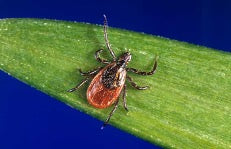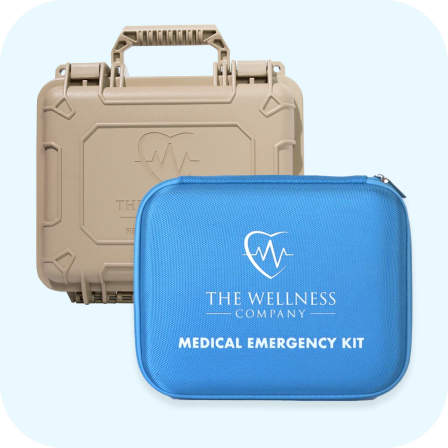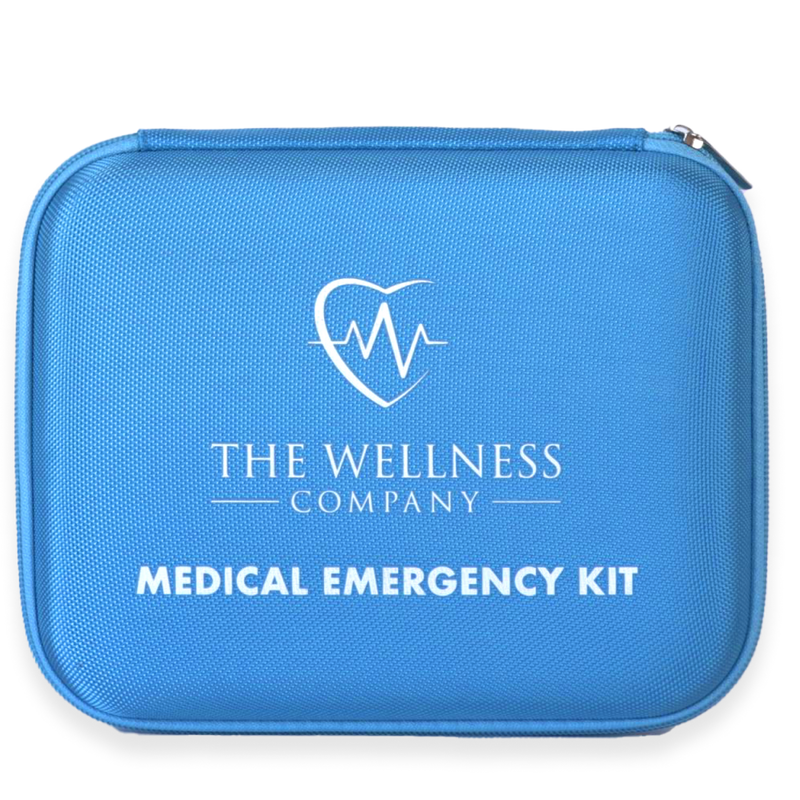Only One Dose of This Antibiotic Treats the Most Common Tickborne Disease in the U.S., Canada, and Europe

(And our Medical Emergency Kit Carries it!)
As spring begins to warm the ground and push old man winter out of the way, many of us will start making plans to spend more time in the great outdoors. The warmer days beckon us to romp in the woods, plan picnics, and feel the warm sun on our skin after a long winter spent indoors. However, with the newfound freedom that the outdoors brings, other critters start to arise from a long winter’s nap.
Lyme disease is the most common vector-borne disease in the United States, Canada, and Europe.
Lyme disease is caused by the bacterium Borrelia burgdorferi and rarely, Borrelia mayonii. It is transmitted to humans through the bite of an infected black-legged tick.

Image of black-legged tick, from CDC website
Where Lyme is found
Lyme disease isn’t unique to just the U.S., Canada, and Europe. It is found in over 80 countries worldwide.
In the U.S., Rhode Island leads the way on incidence rates per 100,000 persons of Lyme disease, followed by Vermont and Main.
Ticks can survive months without feeding on a host’s blood. They can be found in wood piles, dead leaves, and grassy areas, and are especially fond of living near bodies of water. They are “dormant” in cooler winter climates and come out to feed once the weather warms up.
The devastating effects of Lyme infection cannot be overestimated.
Early symptoms include fever, headaches rash, pain, and dizziness.
Classic Lyme rash

Circular, expanding rash with a target-like appearance. Check out the CDC website for other rashes that could be Lyme rashes here.

Treatment (early) If treated early and with appropriate antibiotics people usually recover rapidly and completely.
- Lyme disease from an infected tick bite can be prevented if the tick is removed within 24 to
36 hours.
- For adults, a single dose of doxycycline (200 mg) has been recommended after tick attachment of Lyme disease within 72 hours of removal to prevent Lyme disease from developing.
- If diagnosed with Lyme, doxycycline 100mg for 7 days is recommended by the CDC
- Research is being conducted by Tarsus Pharmaceuticals on a “Tick Kill” pill.
- A controversial mRNA vaccine being developed by Pfizer has been experiencing setbacks in its delivery to the general public.
If an infected tick bite is not detected or is left untreated, Lyme disease can progress to neurological, joint, and cardiac involvement.
Neurologic Lyme disease
Unknown how common Lyme prevalence is- reporting statistics may be overestimated.
Depending on neurological involvement, treatment can consist of doxycycline or ceftriaxone.
- Neurologic symptoms of Lyme disease occur when the Lyme disease bacteria affect the peripheral or central nervous systems.
- Cranial nerve involvement: When the cranial nerves are affected, facial palsy (droop) can occur on one or both sides of the face.
- Peripheral nerve involvement: When the peripheral nerves are affected, patients can develop numbness, tingling, “shooting” pain, or weakness in the arms or legs.
- Central nervous system involvement: When the central nervous system is affected, Lyme meningitis can cause fever, headache, sensitivity to light, and stiff neck.
Lyme carditis
Rare, can be fatal.
Mild symptoms are treated with doxycycline, amoxicillin, or cefuroxime.
Lyme carditis occurs when Lyme disease bacteria enter the tissues of the heart. This can interfere with the normal movement of electrical signals from the heart’s upper to lower chambers, a process that coordinates the beating of the heart. The result is something physicians call “heart block,” which can vary in degree and change rapidly.
Lyme arthritis
Common (about one in four cases of Lyme develop Lyme arthritis).
Treated with doxycycline, amoxicillin, or cefuroxime.
Lyme arthritis occurs when Lyme disease bacteria enter joint tissue and cause inflammation. If left untreated, permanent damage to the joint can occur. Lyme arthritis accounts for approximately one out of every four Lyme disease cases reported to the CDC.
There are several considerations in diagnosing Lyme disease.
- First and foremost are the symptoms of Lyme disease.
- Rule out other illnesses that mimic Lyme symptoms
- Likelihood of infection (tick bite from area known to have Lyme disease)
- Laboratory testing, which consists of a 2-step blood sample.
Prevent tick bites
Ideally, preventing a tick bite is the best defense.
Tick Bite Prevention:
- Know where to expect ticks and be aware of high-risk habitats (grassy areas).
- Perform frequent, thorough tick checks by inspecting hairline, hair, and all body parts. Ticks have been known to crawl into shirts, pants, and even private areas. Many times, you may not feel their initial bite.
- Wear light-colored clothes, long sleeves, and long pants.
- Tuck pants into socks and shirts into pants.
- Put clothes in the dryer for 30 minutes to kill ticks that may be clinging to clothing.
- Shower soon after returning indoors.
- Be sure to tick-check and protect pets too.
Repellents: (Always follow the manufacturer’s directions)
Check EPA-registered products containing DEET, citronella, lemon, and eucalyptus oils are common insect repellents and are registered by the EPA and have been approved for topical use in humans for skin protection. Do NOT use essential oils or other homemade preparations on pets unless approved by your veterinarian. Essential oils need to be applied every 2 hours to be effective.
Many essential oils repel ticks, and some can even kill them. Check out this USDA post on cedarwood oil and its ability to repel and kill ticks. In addition, peppermint oil, eucalyptus oil and lemon oil have some efficacy in repelling ticks.
Check products containing Permethrin for treating clothing and gear.
Check out clothes that protect against ticks.
If you happen to sustain a tick bite, the Auburn Medical Group put out an excellent video on how to remove a tick,(or have your care provider remove it). It is important that you take your time in removing the tick so that no pieces are left in. Consult with your care provider for follow-up after removal.
Check out the Medical Emergency Kit!
Written by Brooke Lounsbury






















